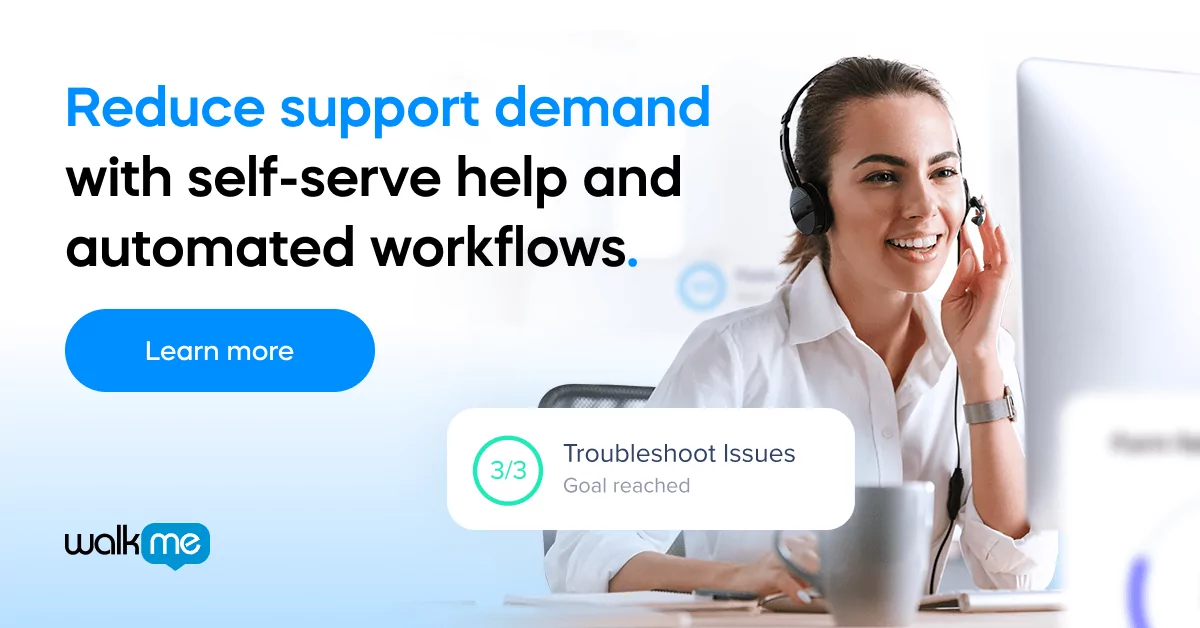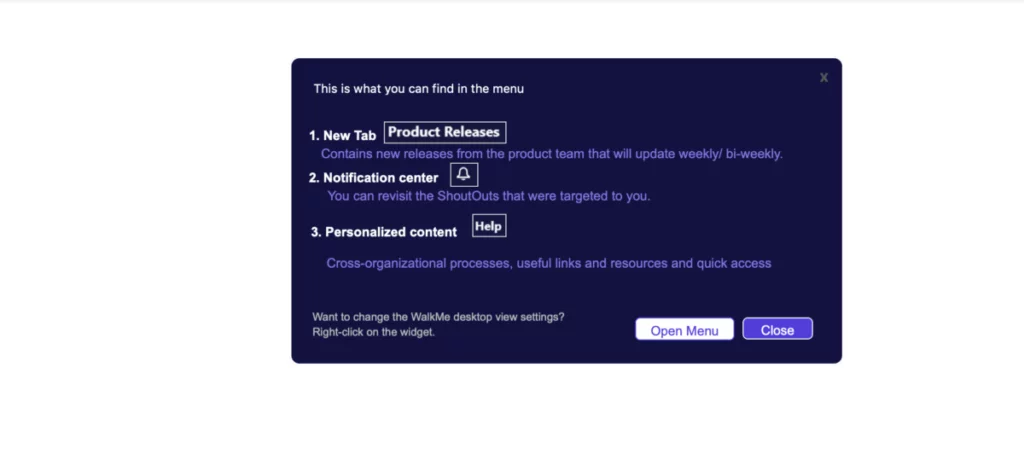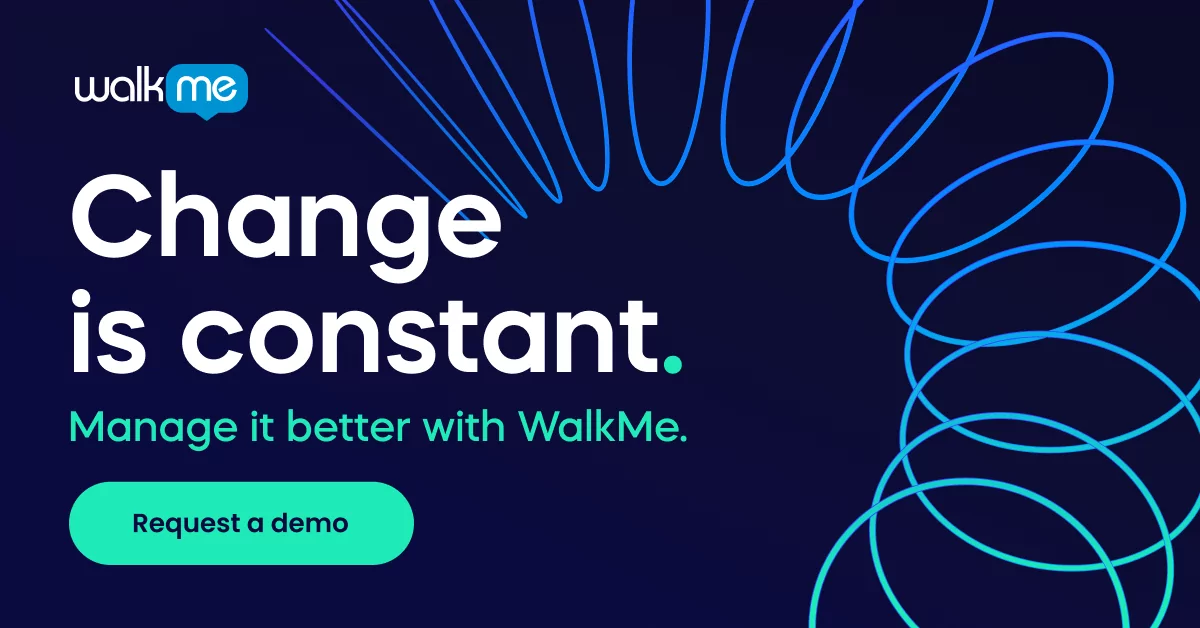I’m a content creator on the marketing team at WalkMe. Before COVID-19 hit, my role consisted of producing engaging blog articles and social media posts, and also nagging IT a few times a week.
If you’re an employee of a company with an IT department, you might be guilty of the same. And if you’re an IT employee, you’re probably nodding your head vigorously. You IT people are the miracle-workers that hold us “digitally-enabled” organizations together, keeping everything running smoothly, often without the recognition that you seriously deserve.
Well this week, we’re shining the spotlight on the team behind the scenes. Guy Sharon, one of our IT Helpdesk wizards, agreed to share how the transition to working from home has been.
The IT WFH reality has changed support in 3 main ways:
- Support requests are more efficient
- WalkMe Workstation is decreasing the need for support
- Zoom remote control is helping to prevent repetitive issues
Here’s how I discovered this, and how it can help IT departments in other companies.
There’s only one way to reach us now
When I asked Guy over a Zoom call, how it’s going, I was surprised by his first answer.
“Having the company working from home has made our lives a lot simpler.”
“What about all of the issues that you guys can’t fix now?” I asked.
He answered that now, unlike when we were all in the office, people actually need a lot less help. Plus, when they do need help, they have to actually open a ticket. They can’t stop by, or send a slack message, email, or… memories of numerous sticky notes that I’ve left on Guy’s keyboard scribbled with “Help!” while he was at lunch flashed before me.

Alright, point taken. There’s only one way to reach IT now, and that’s by opening a ticket, which is a much more effective and organized way for them to problem-solve.
But why would people need less help now that we’re working from home?
WalkMe is using WalkMe more
WalkMe employees have been using WalkMe a lot more since COVID-19 sent us home, and it has resulted in a lot less demand on IT. Guy explained that employees don’t want to go through the effort of actually opening a support ticket, so they are using WalkMe Workstation more, and finding that many of their “issues” are actually easy to solve by themselves.

I personally used our hub of centralized resources to find an internal deck that I needed for an article last week. And the WalkMe Notifications that we’ve been getting are oftentimes answers to questions that I don’t end up needing to ask.
We’re communicating much more through our digital tools internally now that we’re all physically apart. So WFH is actually enabling us to better utilize our own resources and demand less from IT.
Zoom Remote Desktop Control is a game-changer
Last week I needed help setting something up. The guy helping me from support first tried explaining what to do and then said “Can I have control of your computer?” I’ve used Zoom hundreds of times, and I hadn’t realized that this was one of its capabilities.
This function has replaced the “give me your laptop and I’ll let you know when it’s ready” process with “here’s how you can do this.” Remote access support is actually forcing us to learn how to solve problems ourselves by watching as IT goes through the steps. This is also contributing to fewer support tickets, as many people ask for IT to help them do the same things over and over again.
Zoom has been instrumental in this WFH transition in so many areas. A WalkMe extension for Zoom, which offers trouble-shooting and intuitive step-by-step guidance for all Zoom functions makes Zoom even easier and more helpful for working, training, and onboarding.
Hardware and VPN issues are trickier
It’s not all easier working from home. Guy said that some of the simple things, like quick external hardware issues, are now long tedious phone calls with disgruntled employees. But even hardware issues can sometimes be “solved” by finding creative software solutions.
Guy also explained that the VPN is working harder than it’s ever worked before, sustaining hundreds of employees all trying to remotely connect to the WalkMe server at the same time. These trickier issues, hardware, and VPN are both preventable, but due to the sudden nature of this situation, IT has to be a bit creative in how to solve them. If anything, it’s important for future Business Continuity Planning – a remote work strategy must involve hardware and VPN plans.
We’ll all come out of this more digitally-empowered
If there’s one big takeaway I got from this interview, it’s that organizations that are digitally equipped (by having a variety of essential software, a digital adoption platform like WalkMe, and a remote work strategy) are probably experiencing some major benefits to being stuck with WFH.
If digital systems are in good shape, IT will know. Support tickets will be down, and support itself will be streamlined. If digital systems are lacking, IT will feel the pain. They will be ill-equipped to support a workforce of frustrated employees.
This reality is a litmus test for organizational digital transformation progress, and IT is the judge, whether they like it or not.


